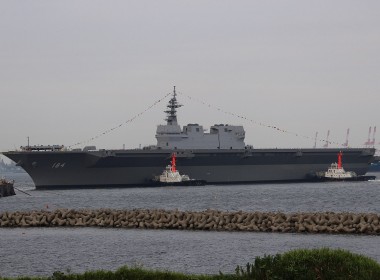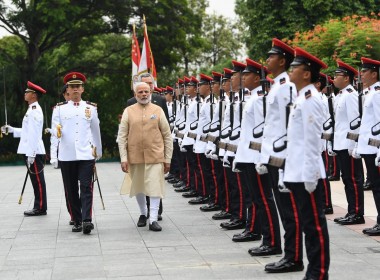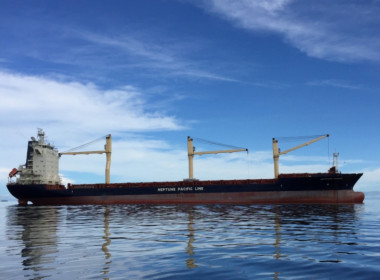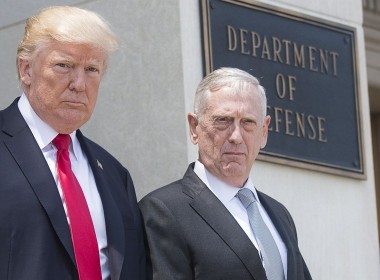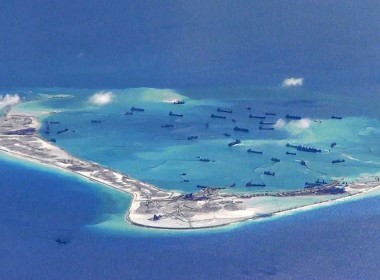OPINION | China’s “blue dragon” strategy in the Indo-Pacific

To compete strategically with the United States and undermine President Joe Biden’s Indo-Pacific policy, China has quietly been advancing its stealthy divide-and-conquer foreign policy agenda on four different but connected frontiers.
The core of Beijing’s comprehensive plan can be described as a “blue dragon” strategy, anchored primarily between two “unsinkable aircraft carriers”, Sri Lanka and Taiwan. The plan targets three bodies of water in the Indo-Pacific region and the major river systems in Southeast and South Asia originating in the Himalayas.
Despite Washington’s public denial of a containment policy against China, the US has continued its global spy operations and increased its defensive military posture in the Indo-Pacific. The Biden administration’s recent re-engagement with Beijing emerges from the tense diplomatic hiatus following the Sino-Russian “no limits” pact in February 2022 and the US Air Force’s downing of a suspected Chinese spy balloon in February 2023.
But can a traditional containment policy prove effective in countering China’s ambitious blue dragon strategy?
“With the release of the ‘new standard’ map of China in August, Beijing has claimed a vast swath of contested waters and reefs, reinforcing its ‘nine-dash line’.”
The first frontier in the strategy is related to territorial disputes over Taiwan and the Senkaku Islands (as known in Japan). While continuing its operational air and sea activities encircling Taiwan and the cross-strait region, China has been penetrating the East China Sea and beyond into the Western Pacific. The increasingly militaristic China has clearly been demonstrating its show of force to Taiwan, while simultaneously sending a message to the United States and Japan.
Armed with two aircraft carriers—Liaoning and Shandong—and a fleet of modern ships and aircraft, China’s unyielding pressure on Taiwan is closely tied to President Xi Jinping’s dedication to the “reunification” of the “breakaway province”. The Chinese government has explicitly stated that “national reunification is the only way to avoid the risk of Taiwan being invaded and occupied again by foreign countries [and] to foil the attempts of external forces [i.e., the US] to contain China.”
The constant Chinese People’s Liberation Army Navy and Air Force exercises mark an escalation of Beijing’s grey-zone warfare in the Taiwan Strait and the Senkaku Islands, and even in the vicinity of US military bases in Okinawa and Guam. China’s strategy includes normalising Beijing’s territorial claims.
Beijing’s second frontier is linked to its militarised artificial islands in the South China Sea. With the release of the “new standard” map of China in August, Beijing has claimed a vast swath of contested waters and reefs, reinforcing its “nine-dash line” in the South China Sea. China’s neighbouring countries—including India, the Philippines, and Vietnam—were infuriated by the new map.
In 2016, an arbitral tribunal ruled that Beijing had “no legal basis” for its “expansive claim to sovereignty over the waters” of the South China Sea. The global community at the time hoped that the landmark ruling would force China to reconsider its claims and honour international law.
Despite the ruling, however, China’s militarisation of the South China Sea continues, and its escalating assertiveness has compelled the US to try to thwart its expansion efforts. While the US hasn’t ratified the 1982 UN Convention on the Law of the Sea, it continues in practice to operationalise the convention’s principles, maintaining that “all States [should] enjoy the freedoms of navigation … [and] lawful uses of the sea”.
“Beijing’s goal is to transform the Indian Ocean into the ‘Western Ocean’—a name that can be traced back to ancient Chinese literature and poetry.”
China’s third blue dragon frontier is associated with India, Sri Lanka, and the Indian Ocean. Beijing continues to claim Aksai Chin and Arunachal Pradesh as Chinese territory. These claims are carefully devised to keep India perpetually restless and to drain its military and financial resources rather than finding a permanent solution to the border conflict.
The northern encirclement of India is also strategically linked to China’s “Buddhist diplomacy” with Sri Lanka and its surrounding Indian Ocean. Beijing’s goal is to transform the Indian Ocean into the “Western Ocean”—a name that can be traced back to ancient Chinese literature and poetry. This tale of China’s “peaceful rise” and historical relationships is showcased in Sri Lanka. Sri Lanka is the “crown jewel” of the Belt and Road Initiative, as evidenced by Beijing’s construction of the Hambantota Port, the Colombo Lotus Tower, and other massive infrastructure with loans to the island.
Sri Lanka continues to play a pivotal role between China, India, and the US. When Sri Lanka was declared bankrupt after defaulting on its international loans and other financial obligations in May 2022, it was India that provided the needed loan of US$3.8 billion. Out of concern for disclosing China’s “art of war” in secret dealings, Beijing has advocated a bilateral Sino-Sri Lankan solution and declined to involve a multilateral framework aimed at achieving a sustainable debt-restructuring scheme.
Instead, China has announced the sending of the PLA Navy ship Shi Yan 6 to Sri Lanka later this month, raising “concerns” in both New Delhi and Washington. In August 2022, India and the US also expressed security concerns over Yuan Wang 5’s berthing at the Hambantota Port, which is widely considered the next Chinese military base. US Senator Chris Van Hollen recently reiterated in Colombo that Washington is committed to protecting Sri Lanka’s sovereignty “whether it comes to a free and open Indo-Pacific or debt restructuring” by providing assistance through the International Monetary Fund and supporting the Sri Lanka Navy to safeguard the island’s territorial waters. Thus, the competition over Sri Lanka continues.
Beijing’s fourth frontier is related to the geopolitics of water in the Brahmaputra River basin in India and Bangladesh and the Mekong River in the Southeast Asia.
China has been using the rivers in East, South, and Southeast Asia, derived from their tributaries in the Tibetan plateau, to produce hydroelectric power through a vast network of dams. Control over the sources of transboundary rivers, like the Brahmaputra and the Mekong, has also given Beijing significant geopolitical and geoeconomic leverage against the downstream countries. With the expansion of its dam system, China has manipulated the water level of cross-border rivers, disrupting agriculture, farming methods and transportation networks throughout Asia.
Beijing might keep using the powerful water card of manipulation against downstream countries, forcing them into various compromises and concessions. In other words, China possesses a water blackmail tool to pressure lower riparian countries and punish them for policies and actions that don’t correspond with Beijing’s will.
“The US would be wise to sustain a highly agile containment policy through active partnerships with friends and allies while allowing Beijing to make its own mistakes and miscalculations.”
China’s philosophy to win a war without fighting a battle is illustrated by a range of carefully designed tactics from Taiwan to Sri Lanka. America’s traditional containment methods stemming from the Cold War can’t be used in the context of an increasingly versatile and powerful China. Today’s world is more closely interconnected by political and corporate lobbying as well as technology and trade than it was during the Cold War period. Thus, it is nearly impossible to divide the world into pro-American and pro-China camps, especially when the US-Sino trade regimes are inexplicably intertwined and expanding.
Washington needs to keep ahead of China’s scientific and technological advancements and maintain US security guarantees to allies and like-minded democratic countries in the Indo-Pacific. However, American military cooperation—in the forms of Quad and AUKUS, or bilateral defence treaties with the Philippines and Vietnam—is not a panacea. The US should treat its small allies and friends as partners in both the military and economic realms. The Biden administration has begun a “charm offensive” by courting the 18-nation Pacific Islands Forum aimed at curbing Chinese inroads in the South Pacific.
With its growing centralised power and autocratic mindset, Beijing might miscalculate by overestimating its military might and economic capacities. After all, while America’s Cold War containment policy contributed to the downfall of the Soviet Union, the autocratic empire in Moscow collapsed under the weight of its own miscalculations and weaknesses of the centralised system.
Unlike democratic governing systems that have naturally embedded self-correcting mechanisms—such as regular elections, multi-party platforms, and freedom of expression—autocratic and centralised systems tend to erupt from the top, the sides, and the bottom like a volcano. In this worldview, perhaps, China might be its own worst enemy. The US would be wise to sustain a highly agile containment policy through active partnerships with friends and allies while allowing Beijing to make its own mistakes and miscalculations.
Co-written with Antonina Luszczykiewicz, assistant professor at the Jagiellonian University in Krakow.


